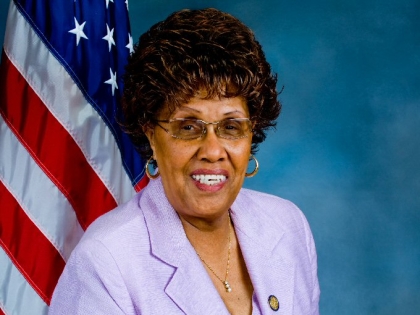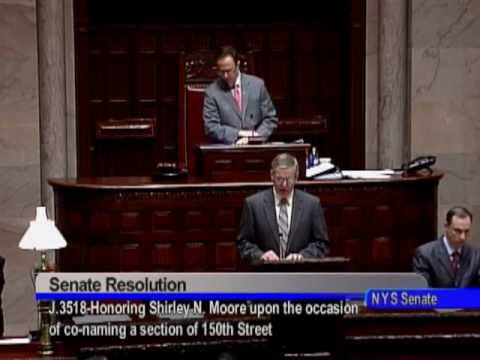
Southeast Queens Changes In 2007
Queens Tribune Online
Matt Hampton, Assistant Editor
The year 2007 saw some big changes in Southeast Queens, for better and worse. On New Year’s Day, the community began the healing process after the shooting of Sean Bell on his wedding day in November of 2006.
Bell was killed in a hail of 50 bullets outside the Kalua Cabaret early on the morning of Nov. 25, 2006. He was to be married to Nicole Paultre, the mother of his two children, later in the day.
New Year’s Day started a 50-day vigil, one day for each of the shots fired on Bell and his friends, Trent Benefield and Joseph Guzman. The vigil was held near the 103rd Precinct station house, and was kept up through cold weather, rain and snow.
Indictments were handed down by Queens District Attorney Richard Brown on March 19, exactly a month after the vigil was finished. The grand jury in the case, after hearing testimony from 60 people, including eyewitnesses and experts on police procedure, deliberated for three days. Three of the five officers involved in the shooting, Michael Oliver, Gescard Isnora, and Marc Cooper, were indicted on a handful of charges, including manslaughter, assault and reckless endangerment. After much deliberation, the trial date was set and ultimately moved, to February 2008.
The year came to a close with Bell also on the minds of community members, who held a nightlong candlelight vigil on the anniversary of his death. The event culminated in a march and church service officiated by the Rev. Al Sharpton, in which he promised that the family would not rest until they found justice in the case. Jamaica’s rezoning received a great deal of attention this year, as the community weighed the advantages of allowing the city to physically restructure the face of 368 blocks in the area to allow for a seamlessly integrated business and residential neighborhood. The plan met strong resistance in the community, but was approved by the city and continues to move forward, with the first buildings in the project scheduled to break ground next year.
The plan’s ultimate goal is to create a kind of "airport village" that utilizes the neighborhood’s Long Island Rail Road station, and the Van Wyck AirTran to create a community that is able to provide commerce for tourists and visiting businesses, as well as maintain its residential identity. To help ease congestion in the area, plans call for widened sidewalks and open green spaces, improved traffic flow with wider lanes on Archer Avenue and left-turn bays on Sutphin Boulevard.
Some residents, including those who believe the plan is changing the area too much, were angry about the proposal of the Economic Development Corp. having to acquire several buildings in order to see the project through.
"I think the community should be outraged," said 40-year Jamaica resident Carol Radin at a February Community Board 12 meeting. "I have no intention of leaving Jamaica." The plan found approval from Community Board 12 in March, but some area residents accused the board of selling the neighborhood up the river.
Doubts were also expressed about the true nature of relocations, and whether members of the community would be part of the entire process, from construction approvals and jobs to employment at the new amenities, including a hotel and retail stores.
Today, the community is still wary about the project, taking early developers to task in recent meetings regarding projects that fall within the new zoning. August floods struck much of Southeast and Eastern Queens over the summer, causing problems for everyone from seniors to homeowners, who paid thousands of dollars in damages and lost priceless memories in torrential downpours. Nowhere was the flood damage so troubling as at the Greater Allen A.M.E. Cathedral senior residence, where the Aug. 8 floods knocked out elevator service.
Seniors at the building were forced to use the stairs, and those in wheelchairs or with other medical conditions were confined to their apartments during the nearly two months they were without elevator service.
Seniors at the residence had to depend on family members or neighbors’ acts of goodwill to pick up prescriptions and groceries.
The building was the first visited by New York City Comptroller Bill Thompson and Congressman Gregory Meeks on their tour of the affected areas of the borough. The Federal Emergency Management Agency responded after the storm, opening aid stations where people could file claims for damages incurred during the storms. Many residents, including former City Councilman Archie Spigner, said that the compensation FEMA was offering was not enough to cover the sometimes massive damages incurred. Thousands of claims were filed in the borough, resulting in millions of dollars in grant money distributed to help people get back on their feet.
As if the threat of natural disaster affecting homeowners wasn’t enough, some borough residents were hit with what’s been characterized as a "financial tidal wave," in the form of the looming foreclosure crisis. The foreclosure crisis, a fiscal calamity many years in the making, finally came to a head in 2007, as many Southeast Queens homeowners started to feel the pinch of predatory or subprime loans they had signed years ago. Variable interest rates began to kick in, causing mortgage defaults and starting a snowball effect that could potentially affect thousands of people in Queens alone. Panel meetings and foreclosure workshops became an almost weekly occurrence in Jamaica, Cambria Heights, Laurelton and St. Albans, an area that many politicians are calling "ground zero" for the foreclosure crisis.
"More than half of the homes in Southeast Queens will be foreclosed unless something happens," state Senator Shirley Huntley, a Jamaica Democrat, said at a July meeting she hosted. Marie Eduard, a Laurelton woman interviewed by the Chronicle in April, told an all too familiar story.
"I told (my broker) I didn’t think I could afford the house because my income was too low. He said ‘Don’t worry about it,’ that he’d take care of it." Eduard was given the full balance of the $495,000 required to purchase her home, which she realized too late was far beyond her capacity to pay. Tales from around the borough and around the country were equally fatalistic, and the furor over the loan process that created the problem became more intense.
In December, as President George Bush urged banks to voluntarily come to the table, and advocated the institution of a freeze on variable rate loans, the Rev. Jesse Jackson visited Laurelton in an attempt to lift the spirits of those who had fallen victim to the crisis. "This is beyond the capacity that Jesse James could conceive of; it’s a far bigger robbery than that," Jackson said. As he spoke, Jackson stressed his message that subprime loans and the foreclosures that often result from them are the financial crisis of this generation.
"President Bush said, ‘Yes, this is a bump in the road.’ This is not a bump, this is a mountain." Gov. Eliot Spitzer responded to the cries of his Queens constituents as well, visiting here in December and instituting policies and procedures that direct homeowners in crisis to counseling. The problem, he cautioned, is much too big for the state to solve on it’s own. This proved to be a year of big challenges in Queens, and between foreclosures, rebuilding projects and flooding, the road ahead will be a difficult one.
